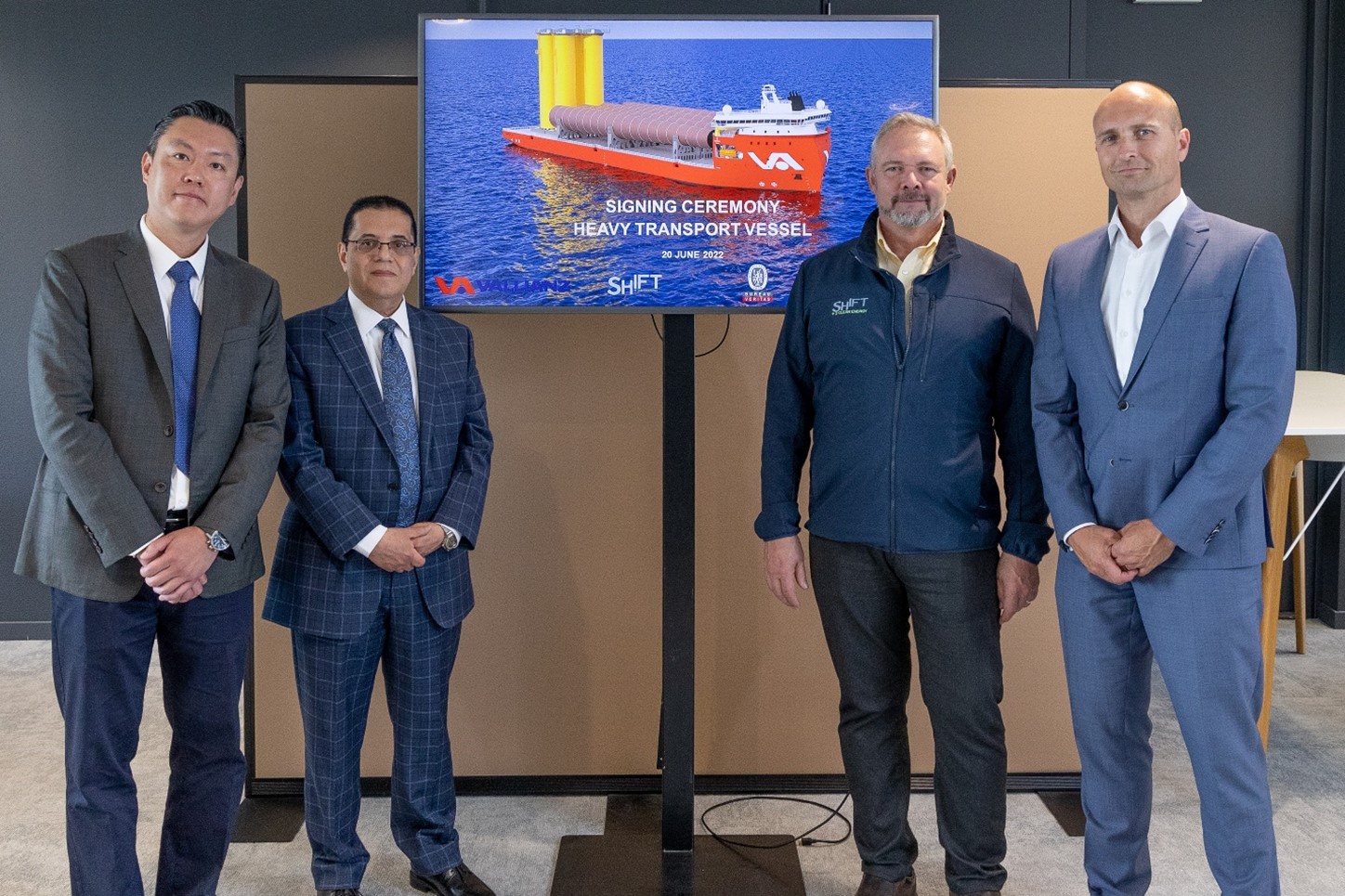The Netherlands – In order to design and build the world’s first heavy transport vessel (HTV) for the offshore wind industry, Vallianz has partnered with Ulstein Design & Solutions B.V., Shift Clean Energy, and Bureau Veritas.
The HTV, which is built for global operations, will be used to transport heavy structure modules for LNG as well as carry out floatover operations of offshore structures. These structures include monopiles, jackets, transition pieces, and turbine blades to support offshore wind farm projects. The DP-2 vessel will be the first of its kind, with zero emission capability, and will be powered by a hybrid power system made up of alternative dual fuelled engines and a fully-classed battery energy storage system. The HTV also has the tried-and-true ULSTEIN X-BOW®, which helps to save energy while enabling more comfortable and secure operations when navigating waves.
The customized ULSTEIN HX120 design will have a free deck length of 145 meters and an overall length of 173.6 meters. The new HTV can transport cargo weighing up to 32,000 metric tonnes thanks to her large deck area of more than 6,000 square meters and deck strength of 25 tonnes per square meter. This includes very large modules and structures like jacket foundations, transitional pieces, and monopiles.
Signing ceremony in Rotterdam
The Ulstein Group’s Dutch design office is responsible for creating the HTV’s design. Shift, a Canadian company, will supply the HTV’s electric battery system, and Bureau Veritas will certify the vessel. It is anticipated that construction will take up to 26 months to complete. At a signing ceremony held at Ulstein’s office in Rotterdam, the Netherlands, representatives from Vallianz, Ulstein, Shift, and Bureau Veritas marked the collaboration.
The component parts will need to be bigger as offshore wind turbines get bigger. This means that much larger vessels will become the preferred mode of transportation along with the significant global growth of the offshore wind market, while the sheer volume of anticipated foundations will also require more of such vessels. It is for this reason, among others, that a recent analyst report on the HTV market comes to the conclusion that the current global supply of HTVs will not be sufficient to meet the anticipated demand for such vessels in the upcoming few years.





